How Coed Dinghy Nationals Were Won
Published on June 6th, 2016
The Inter-Collegiate Sailing Association (ICSA) annually holds six national championships, with the four-day Gill Coed Dinghy National Championship (May 31-June 3) concluding the 2015-16 season in San Diego, CA.
The Dinghy Nationals is the most notable of the six titles, and when the final race has four teams within seven points of the lead, perhaps the most exciting too. After 36 races, Georgetown University survived the scrum to win the title.
Scuttlebutt editor Craig Leweck caught up with Georgetown head coach Mike Callahan to discuss the achievement…
Get us caught up on the history.
I’ve been coaching at Georgetown since the fall of 1997, and this is now our third time winning the Henry A. Morss Memorial Trophy. We won in 2008 in Newport, RI and 2012 in Austin, TX.
How did the team look coming into the season?
The biggest difference with this team was that we lost our B-division starter from last year, Alex Post, but we added some great depth such as Campbell D’Eliscu ’19 and Andy Reiter ’19 plus transfer Roger Dorr ’18. Both Campbell and Roger had won their divisions at High School Nationals, so having a second group of boats to sail against at practice has really made a difference.
Was your approach any different this season?
We have a much smaller schedule than the rest of the varsity teams. That’s partly by design so we don’t over work ourselves and partly financial as we don’t have the budget to do as many regattas as some of the other team. So we went about our normal schedule, and we tried to work our new kids in.
It is critical to evolve as a unit, and we had Sean Golden ’16 and AJ Reiter ’17 step up and sail really well. Then our crews, particularly Bettina Redway ’16, Meaghan MacRae ’18, and Isabelle Teare ’17, pretty much sailed every weekend throughout the year and have been fantastic. Of course, the guy that made a lot happen was Nevin Snow ’16. He’s our guy. He is the guy that put it altogether.
How’d you feel coming into Nationals?
I felt good. I thought we had a chance. We’ve been disappointed the last few years, so I felt that with the additions on our team, plus the subtractions in other teams, that we would be better this year.
Any special recon for Nationals?
The funny thing is we have a lot of San Diego kids on our team, but no one had spent much if any time at this venue. They had zero local knowledge. We also had kids that had done well when the 2014 High School Nationals were held at this venue, but there wasn’t much to share. So we approached it fresh, which is not all bad.
But perhaps there was a comfort level that came from familiarity.
Perhaps. It did help that Nationals used FJs, which we sail all the time, and the winds were mostly light, which is similar to our venue on the Potomac River. Put it together and this could have been Georgetown West.
Did it help to compete at Women’s Dinghy and Team Race Nationals before Coed Nationals?
There’s an old saying, “Nothing succeeds like failure.” A week earlier at Women’s Dinghy Nationals, we finished eighteenth, but during that struggle I learned a lot about the race course, and our team did too. That continued during the Coed Semi-Finals, always learning, and I think all of those lessons were essential to doing well here in the Finals. Learning about the current, learning about what sides were paying off with different breeze directions. We remembered each of the races.
Any brilliant moves during Nationals that helped secure the title?
I think the difference for us was in the Semi-Finals. We worked our three B division skippers in and didn’t worry about winning the qualifier. We found out the conditions that each of them were good in, which led to us starting Sean in Nationals but then switching to Campbell when the conditions changed. I am not sure what it looked like from the outside as we were still winning when we made the change, but we knew Campbell would do well in those conditions and he did.
With 18 races in both A Division and B Division, how do you manage the highs and lows of the event?
It’s such a long regatta and the key to this event is knowing that everyone gets a turn at getting last in a race. The fleet is so good that every race there is an All American getting last. So you can’t panic, you can’t freak out. If you have a bad race or a bad start, you just got to remember every point counts. So that was the key for us – not getting too up or down. At the end, our kids didn’t even know the points. When they finished the last race, they had no idea if we had won or not, because we didn’t go over the points. It wasn’t about that, it was just about getting good races.
So it helps for the sailors to have a bad memory?
I think that’s the most important thing because there’s 18 races in the series. If it was a three race regatta, it’s tough, but 18 races, you got to forget about it right away and move on to the next race.
Event details – Scoreboard – Livestream – Photos – Facebook
Background: The Intercollegiate Sailing Association’s three spring national championships – Sperry Women’s National Semi-Final and Final Championship, LaserPerformance Team Race National Championship, and the Gill Coed Dinghy National Semi-Final and Final Championship – will be held May 24-June 3, with schools racing Club and Collegiate FJs on San Diego Bay in San Diego, CA. The three events will be co-hosted by San Diego Yacht Club and the Pacific Coast Collegiate Sailing Conference.
Photos by Cynthia Sinclair


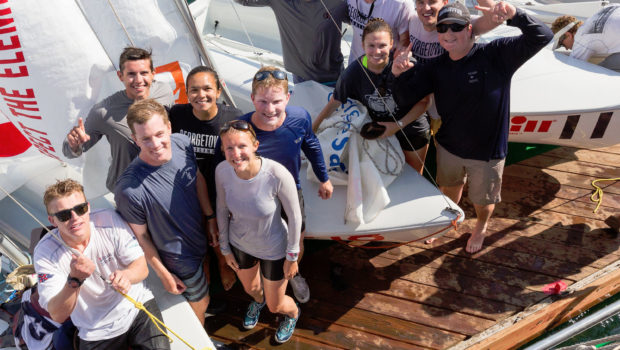

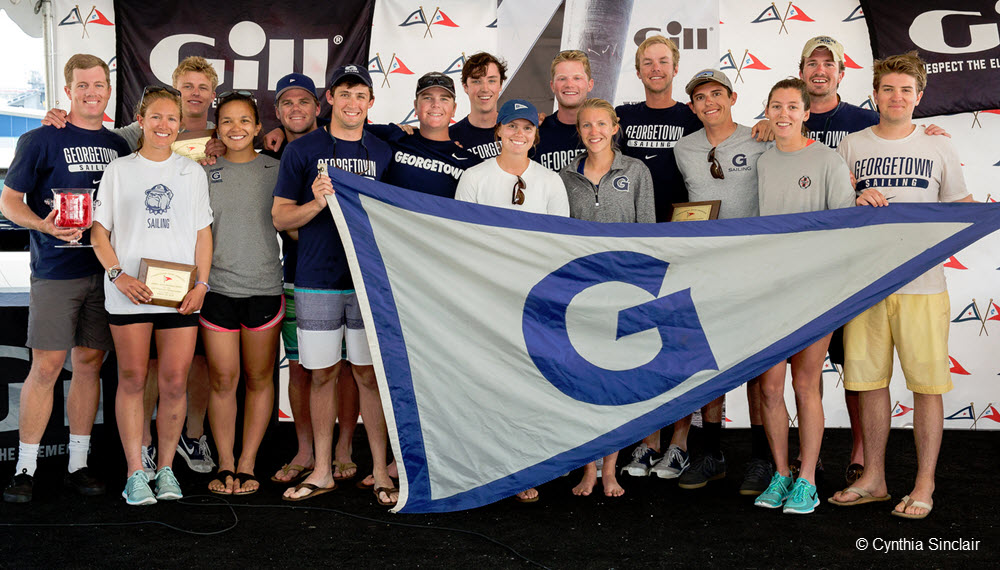

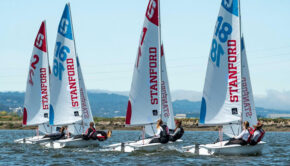
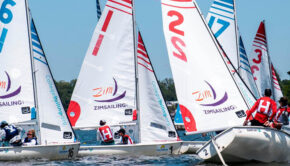

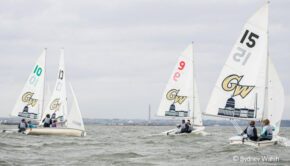
 We’ll keep your information safe.
We’ll keep your information safe.